As we end Elements of Design and before beginning Principles of Design, we wanted to share articles that our Editor found to be very helpful when it comes to designing a quilt. Here are her 10 favorites. We'd love to hear from you. Let us know in the comment section at the bottom of the article, which articles you found especially helpful.
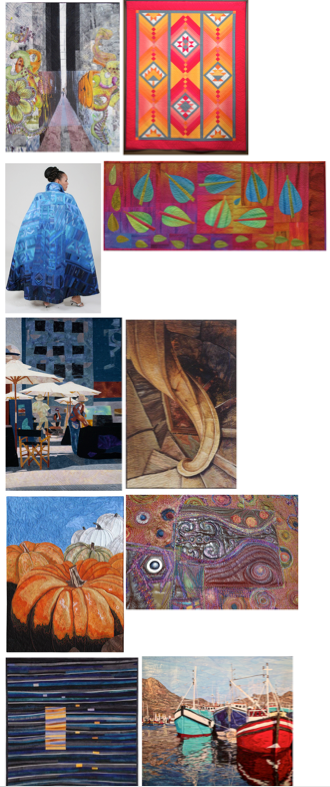
For those who played the quiz last week, gere are the answers:
Row 1-Perspective, Analogous
Row 2-Monochromatic, Triad
Row 3-Shadow, Value
Row 4-Form, Texture
Row 5-Line, Space
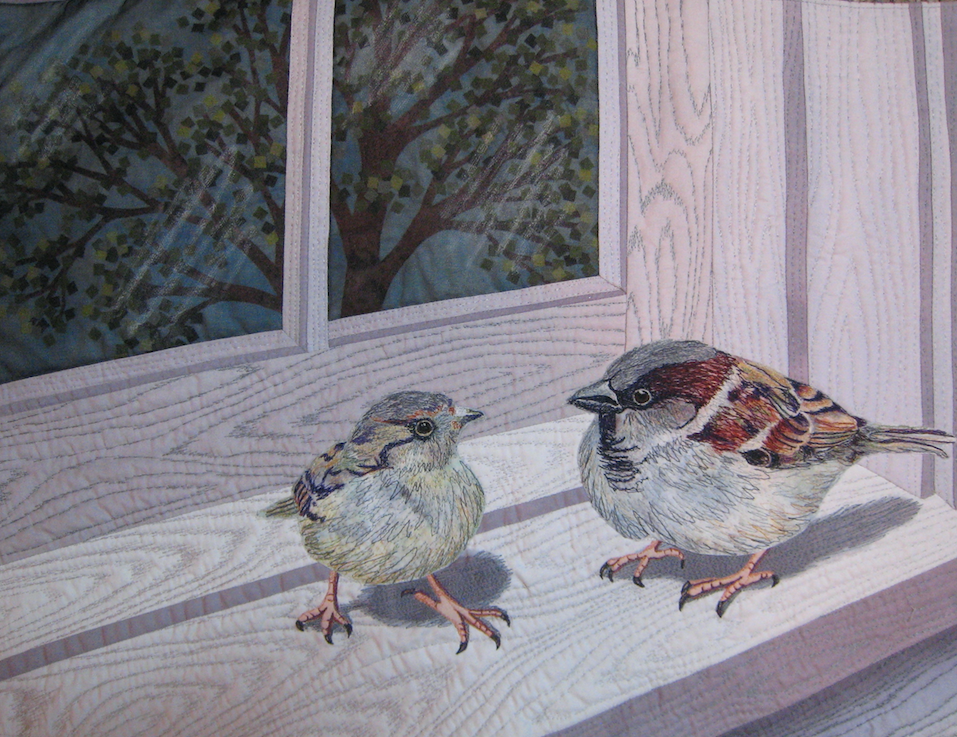
Texture in art engages our sense of touch and sight. It captures the way something should feel when you reach out to touch it. As quilters we are naturally apt to want to reach out and touch a beautiful fabric or quilt. This week we begin studying how you as a quilter can draw viewers in with the use of texture.
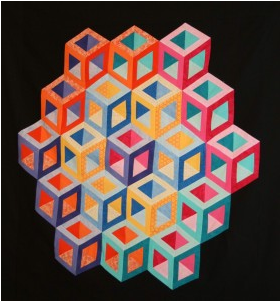
Form in the simplest terms is a three-dimensional figure (i.e. cube, sphere, cylinder, cone, etc.). Form has length, width, and height. Think of it as something you can pick up, set something on, or casts a shadow. Form can bear weight due to it being three-dimensional, while two-dimensional Shape cannot.

Think of it this way. If it's large, it's closer. If it is small, it's further away. The road is drawn using two lines that meet at one point along the horizon line. The lines of the street are drawn at an angle to create the illusion of distance and depth. Notice how both the road, and trees along it, seem to disappear into the horizon. At the point where everything seems to disappear is called the vanishing point

How and what fabric choices you make can result in a flat or less dynamic quilt. Scale, value and pattern can make a huge difference when it comes to selecting fabrics for your quilt project. It's one thing to understand the principles of the terms, but another matter when it comes to actually putting a fabric group together.

Focus on the often misunderstood taupe palette. This group of fabrics is more often than not relegated to what is often called the 'beige' category. But, understanding the subtle nuances of taupe go way beyond just being mere beige.
As you know, working within a single monochromatic color can be challenging for any quilter. Monochromatic literally means "containing or using only one color." And yet, the taupe color palette can create a sense of simplicity, calm, harmony, relaxation and sophistication.

Scrap quilts have a charm and look all their own. And we as quilters cannot help but be captivated by their quirky mix of colors, patterns, fabrics and the occasional unexpected blocks. Antique quilts especially evoke a sense of days gone by, when life moved at a slower pace. The softened and often faded "vintage' look of these quilts impart a sense of charm, comfort, softness and a 'please cuddle me' feeling. It is this desire for a 'vintage' look that has quilters across the globe seeking out patterns and books. Walk through any quilt store and there is sure to be at least one book devoted to the subject. Antique quilts also serve as a wonderful resource for inspiration.
A luscious border print makes this simple block shine. Do you know what it's called? Play the game and find out.
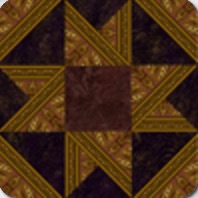
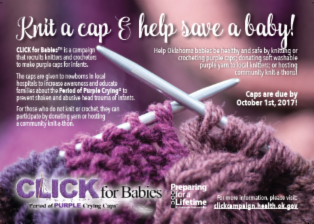
Hole in the Barndoor x 3 designed by Joe Arnold. Interpreted through piecing and quilting by Allison Arnold. (AQS OnPoint Blog)
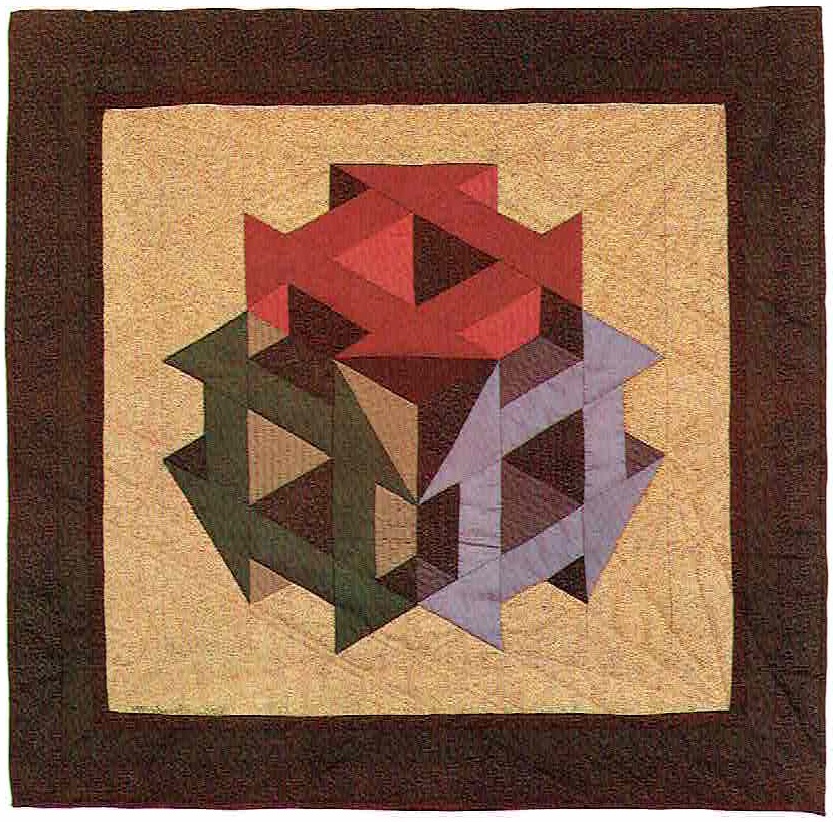
Star Members can watch Nysha in Show 2104: Zentangle Quilts & Totally Tuffets.
Pat writes about her quilt, "Mosaic picture pieced, photo of my grand nieces Hannah and Claire. Aren't they cute? They were 4 1/2 at the time and just bursting with fun. I made this when my Mosaic Picture Quilting idea was new. This piece has 23,100 pieces that are 1/2 inch. This quilt has been in many national shows and got a 3rd place in Houston. It's been in several magazines as well. I am so happy that people love the quilt (I sure do)."
Star Members can watch Pat in Show 2103: Easy Mosaic Techniques and Adding Detail & Depth to Your Quilts.
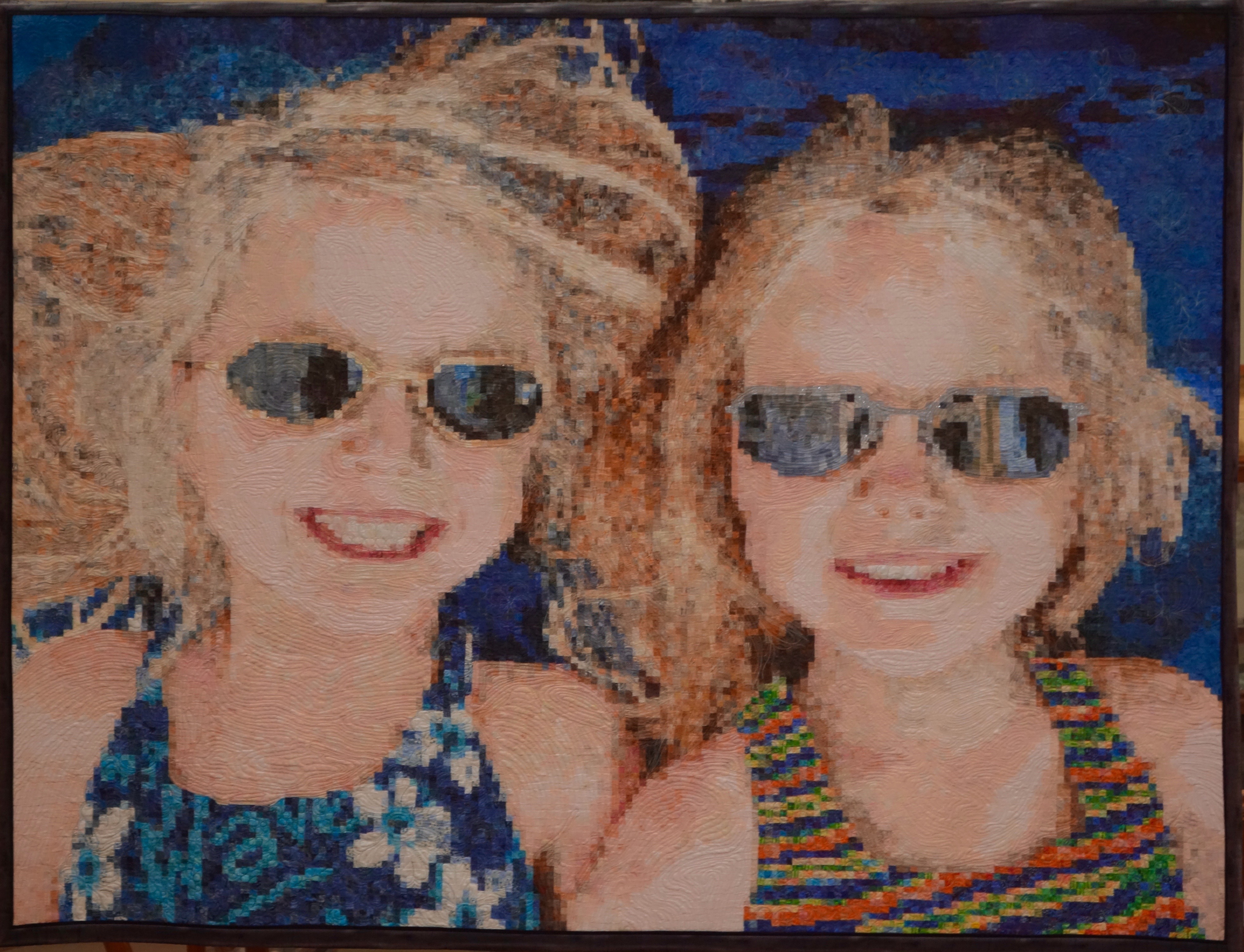 Original Photo: Mary Kay Davis
Original Photo: Mary Kay Davis
